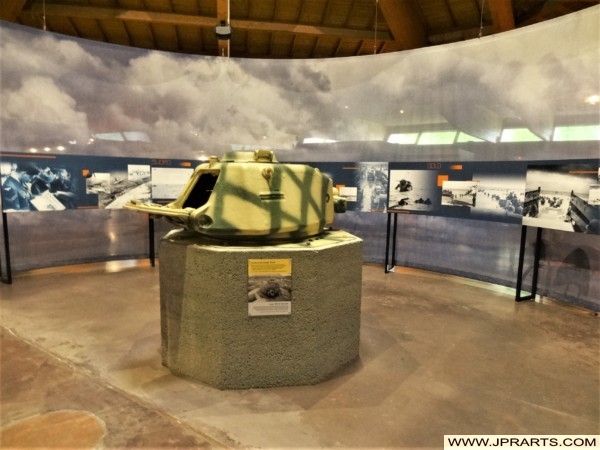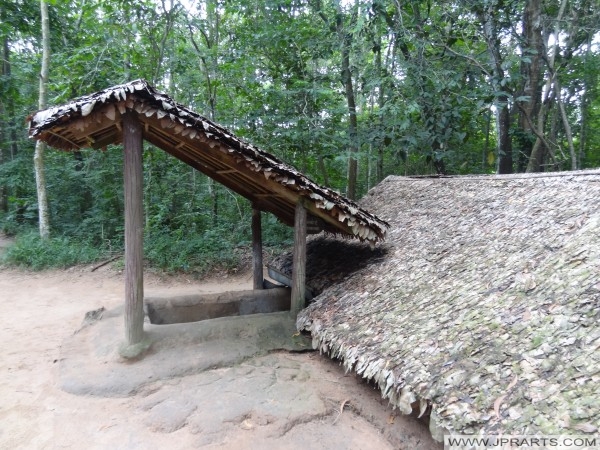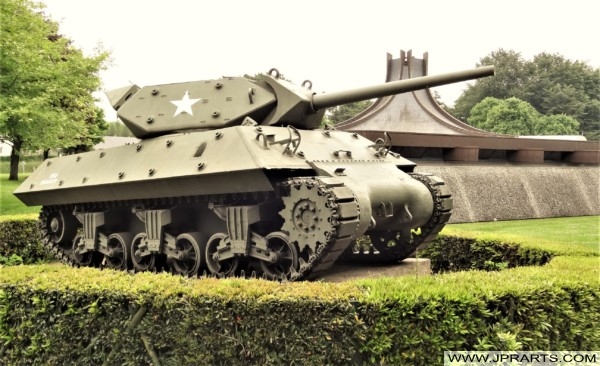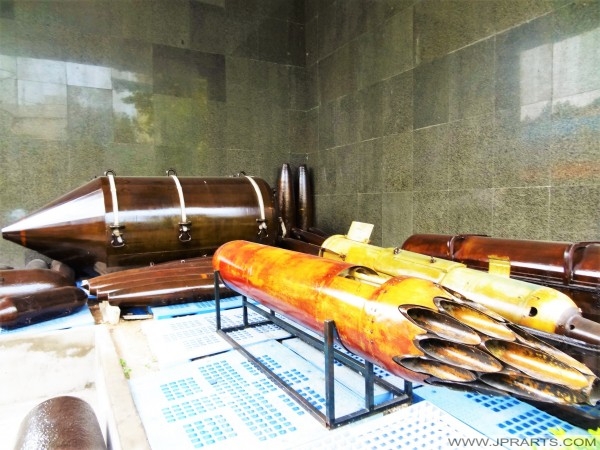A tobruk is generally a small concrete shelter which opens to the outside at ground level through a top opening 80 cm in diameter, and in which a soldier takes place. This individual bunker is a piece of light fortification from the Second World War, buried in a 1.6 m deep pit designed to accommodate a soldier who can stand upright with only his head and shoulders exposed. This underground reinforced concrete room serves as a firing post (close defense role thanks to an automatic weapon, a mortar, a flame thrower, a tank turret, etc.) or even a surveillance post (observation tobruk equipped with a optical communication device, a binocular, a projector).
Tobruk (Fortification)
Tobruk (Fortificación)
Ringstand (Befestigungsanlage)
The tobruk is distinguished from the enclosure, a large concrete platform embedded in the ground and equipped with a parapet, this area allowing cannons to have a field of action of 360°. During the First World War in September 1914, the day after the Battle of the Marne, soldiers spontaneously dug “fox holes”, vertical excavations intended to protect them from projectiles. Individual or two-seater, with or without a sandbag parapet, these structures are progressively linked together and form trenches. During the Second World War, during the siege of Tobruk in 1941, the Axis forces (and first the Italians) got into the habit of burying soldiers and equipment in concrete “foxholes” so as not to let them protrude. of the surface of the ground than the weapons. The concept was taken up by the Germans under the name of Ringstand (“circular location”) for the construction of field fortifications, then under the name of tobrukstand and tobruk, most certainly for propaganda purposes to refer to the capture of Tobruk in 1942.
托布鲁克(防御工事)
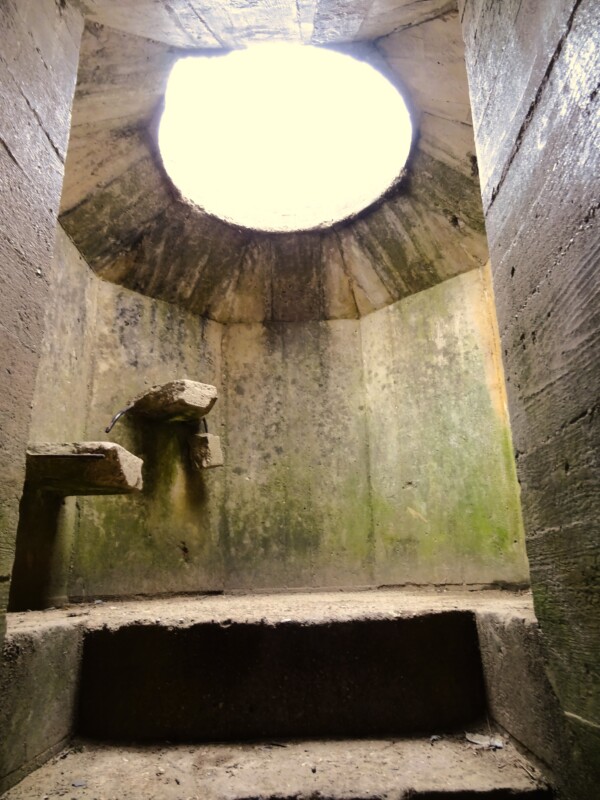
The tobruk is essential in fortifications not only as an isolated block but sometimes also attached to or integrated into a bunker. The isolated block is accessed by a corridor and an underground staircase, generally connected to the position’s network of trenches. The shooting room roof of this concrete niche forms an opening 80 cm in diameter which can be circular, hexagonal or octagonal.
طبرق (التحصين)
Tobrouk (Fortification)
Tobruk (Fortificazione)
Тобрук (Укрепление)
Tobruk (Fortyfikacje)
Quick to build, inexpensive in materials, easy to camouflage, requiring little space for its installation and multifunctional, it is one of the most widespread structures on the Atlantic Wall where they are made on the basis of several standardized construction programs generally according to construction standard B 1, which makes it a semi-permanent VF7 bunker whose peripheral walls and cover slab are typically 40 cm thick1. To each work in these programs, a construction number is assigned corresponding to a type of construction equipped with specific armament. The specialist in German fortifications Rudi Rolf8 “lists 18 models without counting the sub-series. However, as for the modified blockhouses, bearing the extension SK (Sonder Kconstruction) indicating that a basic model has received local modifications, the tobruks are also, in certain cases, modified compared to the original model, by the addition for example, a protective slab, or a particular shape adapting to a particular weapon or even the addition of additional ammunition stores.
Tobruk (Tahkim)
Visit the Cheap Webshop for Blu-rays, Books and DVDs

